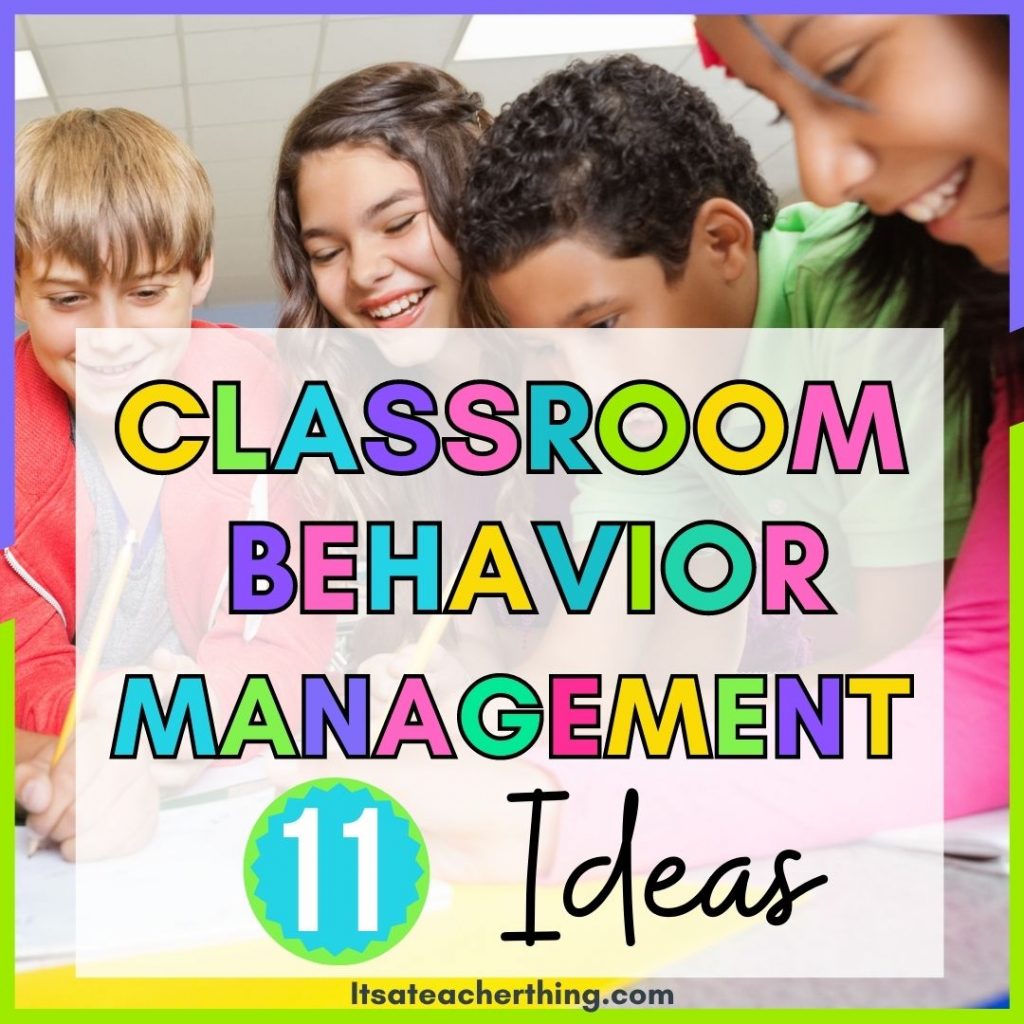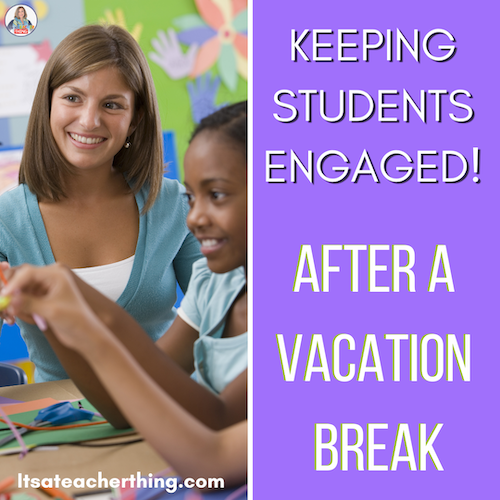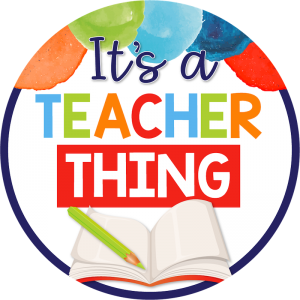One of the most important classroom behavior management ideas is redirecting student behavior. It can be tricky, but if you have a variety of strategies on hand to help, you can easily succeed. Learn 11 of the best ways for redirecting student behavior and add these effective tips to your classroom behavior management ideas.

11 Effective Ways to Redirect Student Behavior
1. Post a list of expectations for all to see
This may seem basic, but when you can refer to the expectations (and you’ve had input from students in the creation of this list) then you’ll have more buy-in.
I like to number the list because it makes redirection easier. I like to say, “Please look at expectation #4. Let’s take 10 seconds to redirect our behaviors to meet this expectation.” This way students must look at the list, which is a redirection in itself, and you don’t need to use your classroom management voice more than necessary, which is beneficial (see #2).
2. Reducing your talking is one of the best classroom behavior management ideas
The more students hear your voice, the easier it is to ignore. When you speak, make it meaningful and to the point. Minimizing how often students hear your voice makes it more effective when you do use it for redirecting student behavior.
Learn other great classroom management strategies in this blog post.
3. Check your lesson delivery, content, and time length
Is your lesson engaging? Can you find ways to change it up to add more interest? Start with an engaging hook statement, question, or image. Talk up a lesson a few days in advance so students anticipate what’s coming. Show your enthusiasm for a topic or subject, but also talk about what confuses or confused you until you learned a certain strategy (that you’ll be teaching).
Is your lesson too long? How can you shorten it? Keeping a lesson direct and to the point reduces the possibility of negative behaviors. Are you checking to see if students understand the directions, and did you post them in a visible location? What do they do when they’re done?
Find engaging early finisher activities that will keep students focused.
Include students in your lesson delivery. Bring up students to line up for agree/disagree statements, have a call back statement for agree/disagree (yea or nay), ask students for thumbs up or down, etc. The more you include students, the less you’ll need to redirect undesirable behaviors.
4. Be consistent, but be flexible
This is by far one of the most effective classroom behavior management ideas. It sounds contradictory (consistent, but flexible), but hear me out. We know students respond differently to situations and that they have different needs. The trick is getting to know your students well enough to know what works when they need redirection. This is the hard part, and it usually takes weeks to get to know students enough to know who needs more flexibility and who doesn’t. This doesn’t mean that there’s not consistency.
Use a code word
It could be that you have an agreement with a student that you’ll give a quiet warning so they’ll know they’re at risk of overstepping boundaries. I often use a code word the student and I’ve agreed upon ahead of time. When I say the word, they know to monitor their behavior more closely.
Use colored cards or sticky notes
This can also be done with sticky notes or colored cards: Green-good to go; Yellow-warning to check yourself; Red-A hard no.
Using punch cards
I know teachers who use punch cards with certain students. When you have to redirect that student, and they respond to your request, punch a hole in their card for instant positive reinforcement. When all the numbers have been punched, have an agreed upon reward. This could be a 5 minute break in the middle of class, a trip to the prize box, a hot chocolate, ordering a book from the book order form (using your points), playing with a certain fidget toy for 5 minutes, etc. Once you get to know your students (especially those who need frequent redirection) you can have a few options you’ve both agreed upon.
Pin this post to a relevant board for later.

5. Use humor when redirecting student behavior
Have a few one-liners you can pull out when things seem chaotic. Try humor first before moving on to another strategy. Feeling this out may take time, but using humor is an effective way to redirect undesired behaviors, whether it’s whole class, a group, or a single student.
6. Use a point system to redirect student behavior
Have a whole-class point system that you can add to and take away from. In my classroom this is called “Free Friday 15.” Here’s how it works:
Every Monday I put 15 hash marks (each represents 1 minute) on the front board for all to see in our Free Friday 15 area. I never go much beyond 15 minutes because time needs to be used efficiently, and more than 15 minutes of free time is too long for kiddos.
When a student, a few students, a group, or the class is needing redirection, I noticeably walk over to the Free Friday 15 section of the board and I pick up the eraser. I stand there for several seconds and look at the class, then look at the board. If behavior continues, I take away a hash mark, representing 1 minute. If behavior doesn’t change, I take another minute, and then another, and so on. Once behavior changes, I put the eraser down and mention that I hope they can add back that time.
I don’t use this strategy every year. It only comes out when I know I have a class that needs further incentive toward positive behavior. Students really respond to the minutes on the board, and it a powerful addition to your classroom management tools.
7. Non-Verbal Cues work well when redirecting student behavior
Use non-verbal cues to signal to students that you need their attention. For example, you can stand at the front of the room and raise your hand or make eye contact with students.
Having one location to stand when you need the class’ attention is also effective. This is your “power spot,” but you don’t need to share that with the class. Train your students to know that when you stand in this spot, you need their attention. Raising your hand or pointing to a written message on the board can be used at the same time.
8. Attention-getting phrases can help in redirecting student behaviors
Use attention-getting phrases to redirect students’ focus back to the lesson. For example, saying “Let’s get started” or “I need your attention” can be effective. You may already have a few phrases you use. Make sure to include 1 or 2 that are specific to behavior redirection.
9. Use the he light switch or an audible sound
Flicking the lights is one way to get the class’ attention without using your voice. Additionally, having a sound that you’ve trained them to know means stop and listen can also work. Again, neither of these options require you to use or raise your voice.
10. Use proximity to redirect student behaviors
Move closer to students who are not paying attention, making it clear that you notice off-task behaviors and that you’re expecting them to engage.
11. Add positive reinforcements to your classroom behavior management ideas
I love using a classroom economy because it includes a variety of incentives for students, but these can be time-consuming to implement effectively. If you’re looking for quick results consider ideas like handing out tickets to enter a weekly drawing, Free Friday Time, punch cards, a fun treat, notice what’s working and make it obvious to students, positive calls, texts, or emails home, brag about your class to adults who walk into your room, etc.
The more you keep attention away from students who are using negative behavior, the more effective your discipline will be. And, many student appreciate not having their redirection be a public event.





Great ideas! I especially like the suggestion of teachers talking less!